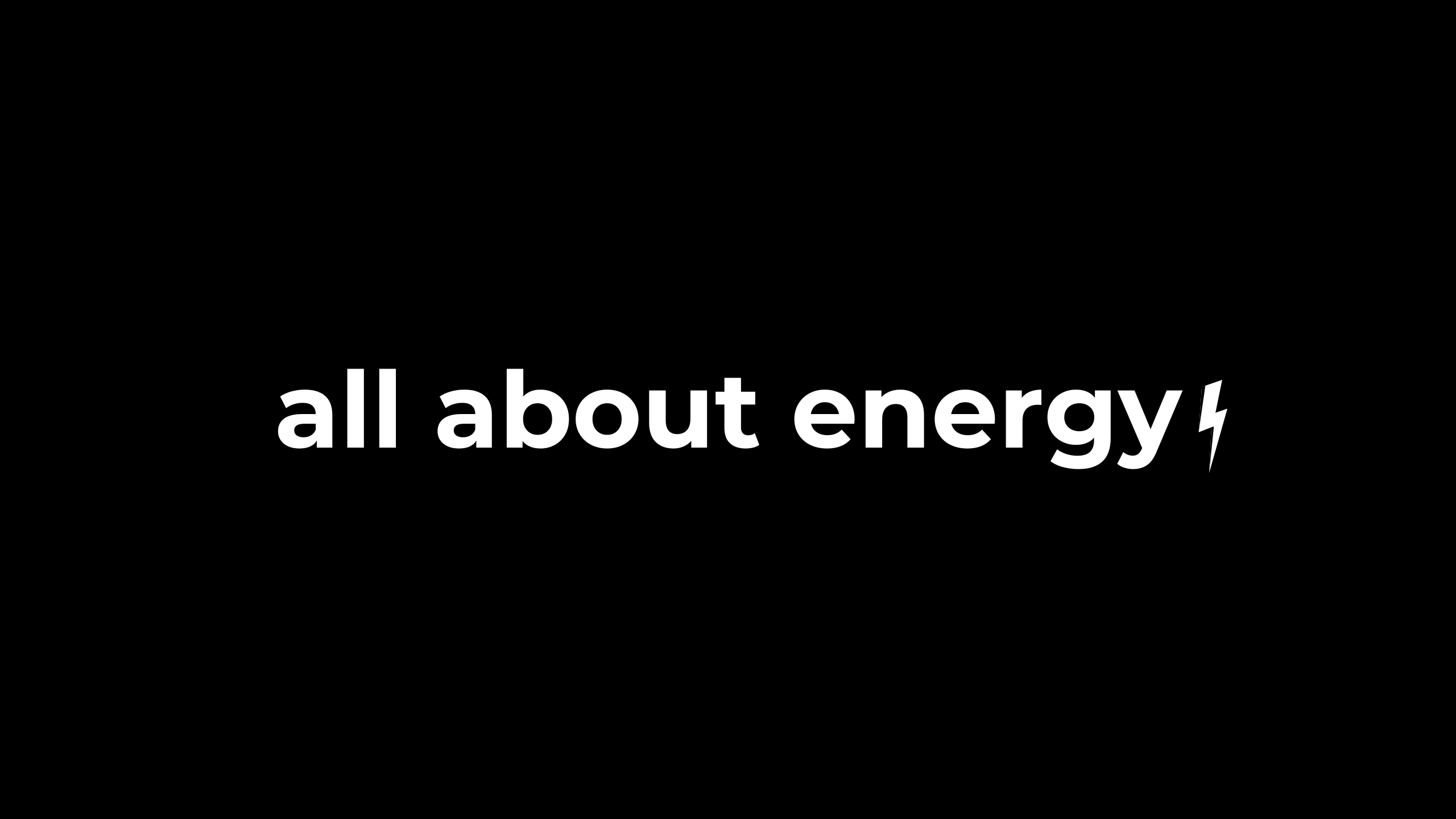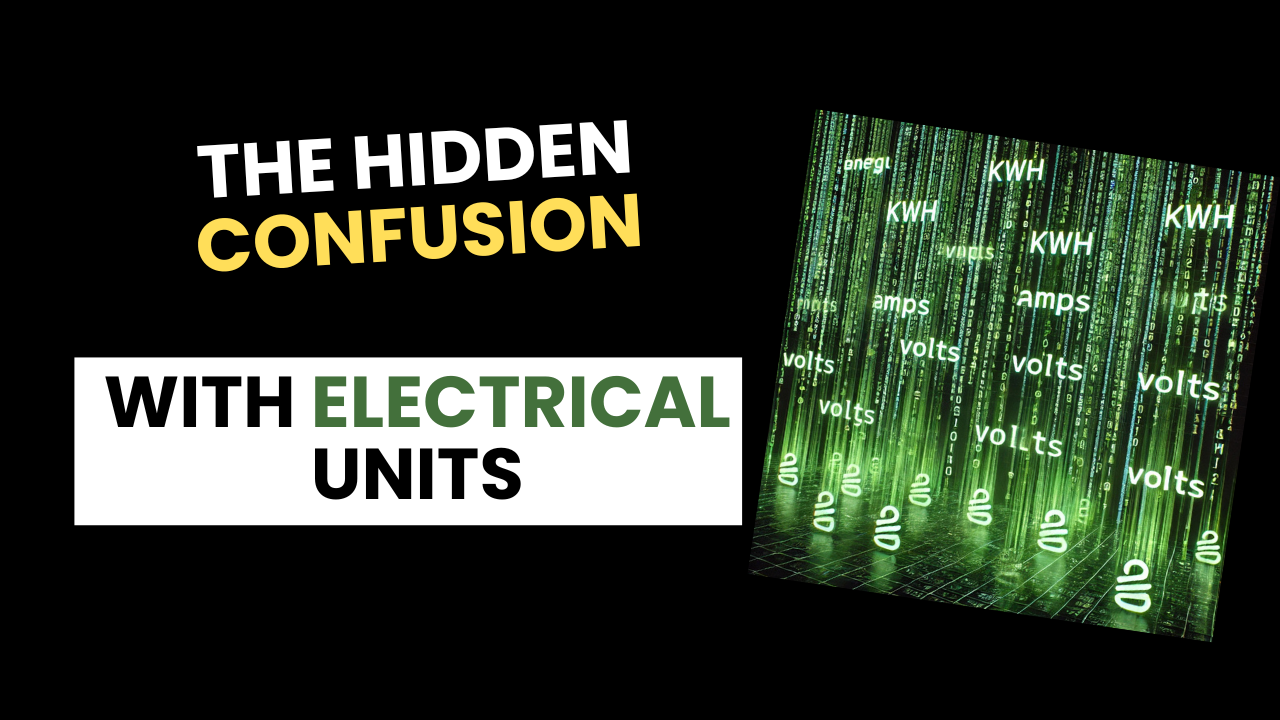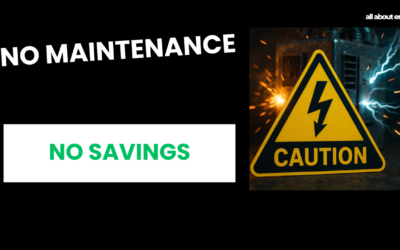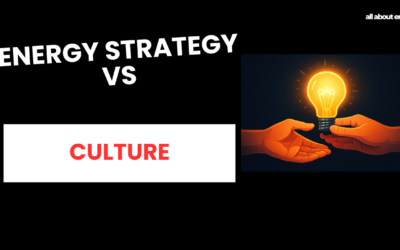Why Understanding Electrical Units Matters for Energy Savings
Written by Joe Wright
As you face increasing pressure to reduce energy consumption and improve efficiency—whether for financial reasons, regulatory compliance, or the pursuit of net-zero goals—it’s becoming clear that even small inefficiencies in how we use electricity can add up to significant costs. This is especially true for organizations with large-scale operations that depend heavily on electrical systems. One often-overlooked aspect is understanding the electrical units that govern energy consumption, namely voltage, current, and the different types of current (AC vs. DC).
By understanding these concepts in-depth, your business can identify untapped opportunities to lower energy bills, reduce maintenance costs, and enhance operational efficiency—all critical elements to achieving long-term sustainability goals.
Understanding these concepts will empower you to make better-informed decisions that directly affect the bottom line. Let’s dive deeper into how these electrical units influence energy consumption and why you need to grasp them.
Voltage vs. Current: The Underlying Forces of Energy Usage
In order to understand how electrical units impact energy efficiency, we need to start with two basic concepts: voltage and current.
- Voltage (V) is the electrical potential difference that drives electrons through a circuit. You can think of voltage as the “pressure” that forces electricity to flow. In simple terms, voltage is how strongly the electrical current is pushed through wires to power equipment. Too much voltage can cause damage, while too little can result in underperformance.
- Current (I), on the other hand, is the flow of electrons through the circuit, measured in amps. The more amps (current) a device draws, the more power it consumes.
If we use the analogy of water flowing through a pipe, voltage is the pressure, and current is the flow of water. Just as a higher pressure in a pipe will push more water through, higher voltage pushes more current through an electrical system.
Let’s go a bit deeper. Electrical systems in your organization use two primary types of current:
- AC (Alternating Current): This type of current changes direction periodically and is what most buildings use for electrical distribution because it can be transmitted over long distances with minimal loss. However, alternating current can also cause inefficiencies in specific systems or equipment, leading to higher-than-necessary energy consumption.
- DC (Direct Current): In contrast, direct current flows in one direction and is often used in applications requiring steady, predictable flow. DC is common in industrial settings, renewable energy systems (e.g., solar panels), and electronic devices.
Each type of current, and the way voltage and current interact, impacts how effectively energy is used and, ultimately, how much energy is wasted. The deeper you understand these concepts, the more control you have over reducing unnecessary energy consumption.
The Hidden Costs of Misunderstanding Electrical Units
As straightforward as these electrical concepts may seem, their mismanagement can have far-reaching consequences. Here’s how a lack of understanding can directly affect your organization’s energy profile, leading to higher costs, unplanned downtime, and increased environmental impact.
- Overloading Electrical Circuits and Equipment: When circuits or devices are subjected to excessive current or voltage, they can overheat, leading to equipment failure or damage. This is especially important in industrial environments where the sheer volume of equipment and machinery increases the risk of overloading. Damaged equipment means costly repairs, unplanned downtime, and shortened asset lifespans. Misunderstanding these electrical units can lead to costly mistakes.
- Increased Energy Waste (Heat Loss): When electrical systems are not optimized, particularly in high-voltage environments, excessive current causes heat to dissipate, wasting energy. This wasted energy translates directly into higher utility bills. Even minor inefficiencies, like running equipment at higher voltage than needed, can significantly inflate costs over time.
- Underestimating Equipment Efficiency: Not all equipment is designed to handle the voltage and current it’s receiving. For example, if equipment is receiving more voltage than required, it may work harder than necessary, increasing energy use and reducing lifespan. The failure to understand the voltage requirements of your equipment could mean you are operating at suboptimal efficiency levels, which ultimately costs more.
- Compromising Net Zero Goals: All of these inefficiencies contribute to a higher carbon footprint, undermining efforts to reach net-zero emissions. If your energy use is not optimized and you’re wasting electricity, you’re inadvertently increasing the amount of carbon your organization emits, making it harder to meet regulatory and sustainability goals.
Real-World Solutions to Optimize Energy Use
Now that we’ve explored the negative implications of misunderstanding electrical units, let’s focus on actionable strategies to optimize energy consumption and avoid common pitfalls. These solutions not only reduce energy costs but also ensure your organization is on track to meet compliance and sustainability objectives.
1. Regular Energy Audits: Uncover Hidden Opportunities
A thorough energy audit should be the first step in any energy efficiency strategy. These audits reveal how your business is using voltage and current across all systems. They help identify areas where voltage levels might be excessive, equipment is underperforming, or loads are not being properly managed.
Energy audits also help detect inefficient electrical systems that might be costing you more than you realize. Once identified, you can make targeted interventions that reduce energy waste. For example, an audit may reveal that certain machines are running on excessive voltage or that older equipment is consuming more energy than modern alternatives.
2. Voltage Optimization: Trim the Fat
Voltage optimization is a targeted strategy that reduces the voltage delivered to equipment to a level that matches its operational requirements. Many businesses unknowingly supply equipment with higher voltage than necessary, causing unnecessary power consumption and additional wear on machines.
By implementing voltage optimization technologies, you ensure your equipment runs at optimal voltage, which reduces energy consumption, extends the lifespan of assets, and minimizes the risk of equipment failure. However, voltage optimization is not suitable for every organization, so it’s essential to consult with an independent energy consultant to evaluate its potential for your operations.
3. Upgrade to Energy-Efficient Equipment
Replacing outdated equipment with energy-efficient alternatives is one of the most effective ways to reduce energy consumption. For example, variable frequency drives (VFDs) on motors help adjust power usage according to demand. This means the motor uses only the amount of electricity it needs, reducing both current flow and wasted energy.
Other equipment upgrades, like high-efficiency lighting systems or energy-efficient HVAC systems, can also reduce your overall electrical demand. When you replace old equipment with newer, more energy-efficient models, the energy savings compound over time.
4. Real-Time Monitoring: Measure, Adjust, and Improve
Implementing real-time energy monitoring systems is critical for maintaining an energy-efficient operation. These systems track voltage and current in real time, giving you the visibility to pinpoint areas where energy consumption is out of control. This constant feedback allows for rapid adjustments and enables you to maintain optimal performance across your entire operation.
By staying on top of your energy use, you can continually tweak your energy-saving strategies, ensuring that your business stays on track to meet both financial and environmental goals.
A Strategic Approach to Energy Management
Understanding the intricacies of electrical units may seem like a small detail, but in reality, it’s a powerful lever for reducing operational costs, ensuring compliance, and reaching sustainability objectives. For businesses striving for net-zero targets or facing strict regulatory frameworks, taking the time to understand and optimize how you use voltage and current is a strategic move. Whether you choose to take this on internally or enlist expert help, mastering electrical units will help you unlock long-term savings, improve asset reliability, and enhance your overall energy strategy.
By focusing on these key elements—efficient voltage management, current optimization, energy-efficient equipment, and real-time monitoring—you’ll be better equipped to save energy, lower costs, and support your business’s sustainability goals.
Watch the video for a quick overview of this topic:
You May Also Like…
Compliance Simplified
If you’re part of any of the mandatory compliance scheme like SECR, ESOS, or the many others out there, then you...
Why maintenance matters for energy management
When you think about improving your energy management, where does your mind go first? Upgrades? New systems? Cutting...
Creating A Culture Of Energy Efficiency
If your business is subject to compliance schemes like ESOS or SECR, you’re not alone. A lot of the companies I work...




